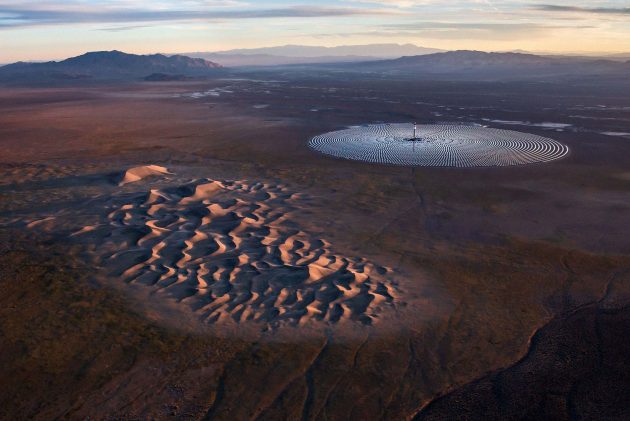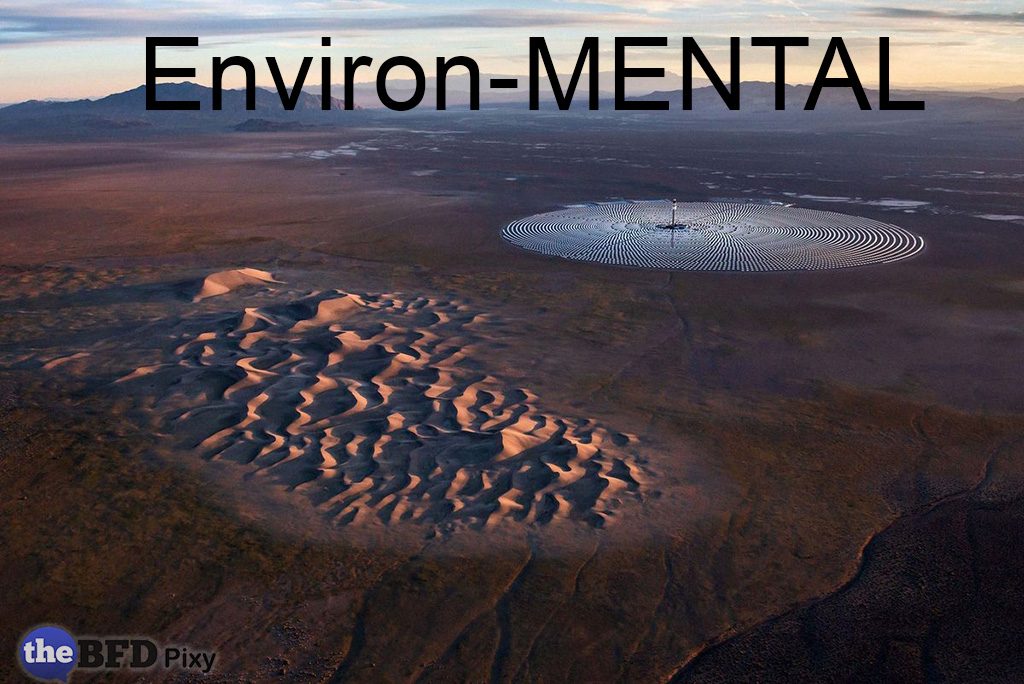Ten thousand mirrors form a spiral approx 3 km (2 miles) wide that winds around a skyscraper rising above the desert between Las Vegas and Reno. It is a billion-dollar memorial to man’s stupidity.

It was supposed to soak up enough heat from the sun’s rays to spin steam turbines and store energy in the form of molten salt. Instead, it soaked up a poultice of taxpayer money, spun a tall tale and stored up a huge cleanup bill for the poor taxpayers. Bloomberg reports:
In 2011 the $1 billion project was to be the biggest solar plant of its kind, and it looked like the future of renewable power. Citigroup Inc. and other financiers invested $140 million with its developer, SolarReserve Inc. Steven Chu, the U.S. Department of Energy secretary at the time, offered the company government loan guarantees, and Harry Reid, then the Senate majority leader and senior senator from Nevada, cleared the way for the company to build on public land. At a Washington celebration of SolarReserve’s public funding, Chief Executive Officer Kevin Smith told the assembled politicians, “We’re proud to be doing our part to win the future.”
That quote didn’t age well.
SolarReserve may have done its part, but today the company doesn’t rank among the winners. Instead, it’s mired in litigation and accusations of mismanagement at Crescent Dunes, where taxpayers remain on the hook for $737 million in loan guarantees. Late last year, Crescent Dunes lost its only customer, NV Energy Inc., which cited the plant’s lack of reliability. It’s a victim, ironically, of the solar industry’s success over the past decade. The steam generators at Crescent Dunes require custom parts and a staff of dozens to keep things humming and to conduct regular maintenance. By the time the plant opened in 2015, the increased efficiency of cheap solar panels had already surpassed its technology, and today it’s obsolete—the latest panels can pump out power at a fraction of the cost for decades with just an occasional hosing-down. […]
In just four short years solar panel technology improvements had busted this billion buck boondoggle.
The plant’s technology was designed to generate enough power night and day to supply a city the size of nearby Sparks, Nev. (population 100,000), but it never came close. Its power cost NV about $135 per megawatt-hour, compared with less than $30 per MWh today at a new Nevada photovoltaic solar farm, according to BloombergNEF, which researches fossil fuel alternatives. […]
Local motel manager Linda Taylor said:
“It’s dead. But real pretty, though. You can see it for miles.”
If you enjoyed this BFD article please consider sharing it with your friends.

